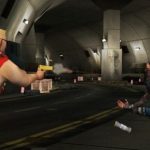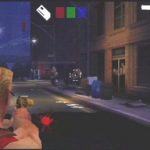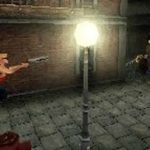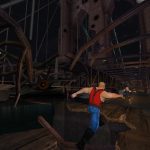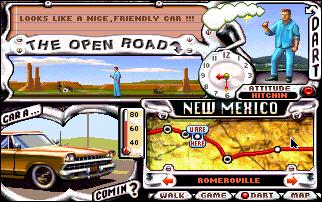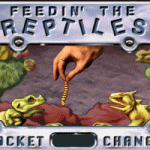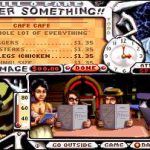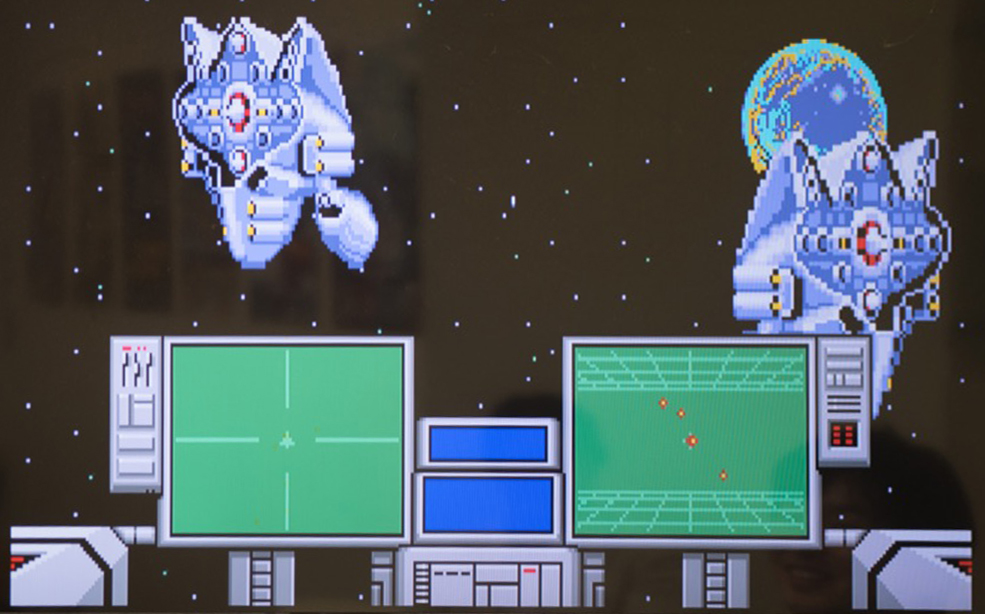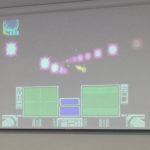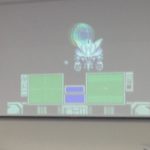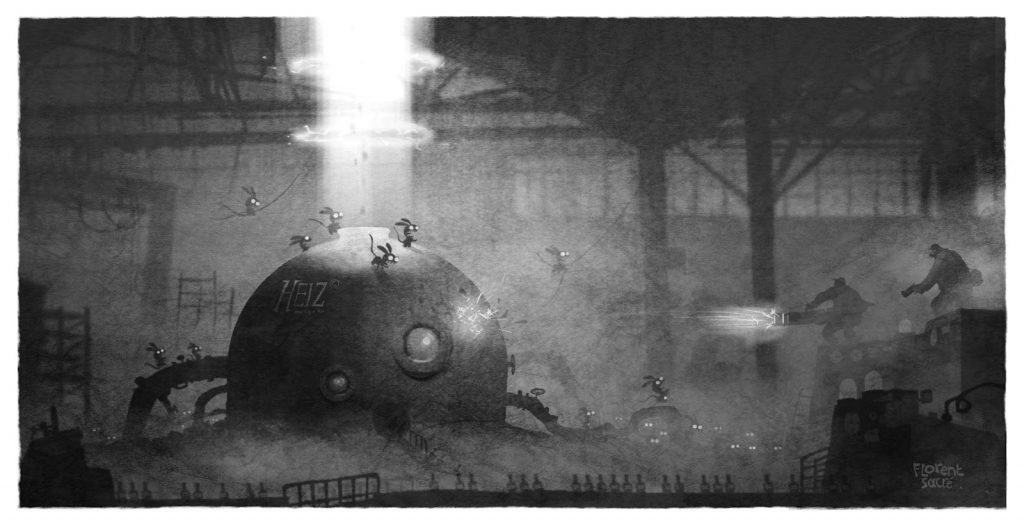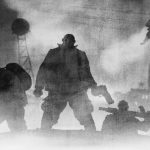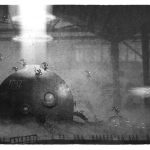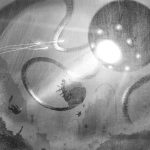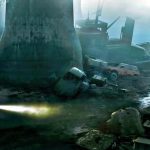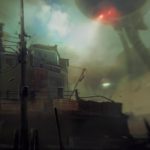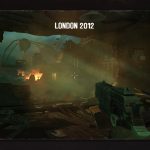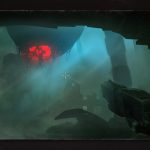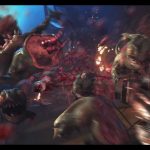Duke Nukem: Critical Mass is a run & gun shooter game, released on the Nintendo DS platform in 2011 by Apogee Software. The game was originally intended to also come out as a Playstation Portable game but was later cancelled for unknown reasons. Rumours on the game started early as the beginning of 2008 and were later in July of that year confirmed when Apogee Software announced a completely new Duke Nukem adventure: a Trilogy which would be developed for both systems in cooperation with publisher Deep Silver and which would be developed by Frontline Studios. After being rebranded to 3D Realms this would also be the revival of the Apogee brand in game development and publishing. The trilogy would consist of three separate games with Critical Mass being the first; its original release date set in the fall of 2009 and would be followed by the other chapters Duke Nukem: Chain Reaction and Duke Nukem: Proving Grounds.
Besides the storyline the games on DS and PSP would however be completely different from each other; the Nintendo DS version would be more of a side scroller while the Playstation Portable would be more of a third / first person shooter. The game would have on both platforms a multi-mode where players could easily switch between third person, first person, isometric and side scrolling views including some extra options as a sniper mode, a jetpack mode and different boss battle modes. The Critical Mass chapter would have 9 areas to complete, divided into 27 missions and the player was promised 15 different types of weapons, multiple and secret ways to achieve in-game points and on top of that both platforms would have cinematic rendered cut-scenes between levels. The huge difference between the Nintendo DS and the Playstation Portable, being two complete different machines can be seen in the two screenshots below which I took out of a promotional video released by Apogee in March 2009 made specially for the Game Developer’s Conference; the promotional video was cut in two pieces and showed screenshots of both systems. Funny thing was that the PSP version was rated Mature and the DS was only rated Teen. So two complete different games carrying the same story.
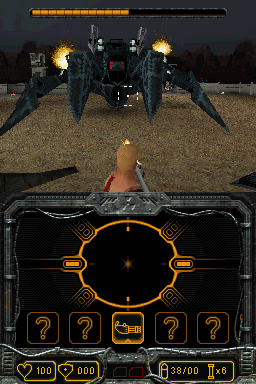

In the first chapter of the trilogy some Earth Defense Organization had been sending out special agents on missions into the future to ensure the safety of the Earth; none of the sent agents however reported back and our hero Duke Nukem is sent into that same future to figure out what is going on. In that future Duke Nukem finds a ruined world in complete chaos and disaster, mankind is almost entirely wiped out and the remains of it are reigned and controlled by aliens. Duke then discover that things might have gone wrong because of him; the moment he left the earth for the future it was attacked by those same alien forces. In the second chapter “Chain Reaction” Duke heads back to the present time in hope of fixing things in the present and thus also in the future. In the third chapter “Proving Grounds” Duke would see things getting worse and ends up being involved in a new World War.
So the DS version was released, being it much later then planned: what happened to the PSP version of the game? In March 2009 Apogee Software confirmed that the release date of both versions was still set for September of that year. They then went a bit silent and rumors about Apogee’s mother company 3D Realms closing its doors start to spread; everybody expected that the same would also happens to Apogee Software. Apogee however denied all rumors and stated that the company under no circumstances would be affected by the 3D Realms situation and that the development of the Duke Nukem Trilogy was going according plans. 3D Realms was at the time also working on Duke Nukem Forever. In May of the same year Take-Two, who was at that moment the holder of the publishing rights for Duke Nukem, filed a law suit against 3D Realms, stating that 3D Realms failed to deliver the game. In 2010 Take-Two announced that Forever had been shifted over from 3D Realms to Gearbox and that it had sold all the rights and the intellectual property to that same company. It was later announced that Critical Mass could no longer carry the Duke Nukem license. They decided to change the game with replacing all traces of Duke Nukem like player models, logos and even voice-overs. The name of the main character was also changed and replaced by a new hero called Cam Nash. Frontline Productions even had a new name for the game, “Extraction Point: Alien Shootout” and decided that the new game now would be released on the Playstation Network. Their biggest problem now was that they faced having to deal with a complete new IP, without a well-known and thus easier selling IP like Duke Nukem.
Things then got even weirder when later in 2011: Apogee Software stated that they did not lost the license for Duke Nukem and that the release date for Duke Nukem: Critical Mass was set for June 2011, but just the DS version. A PSP version was no longer spoken off and was said to be cancelled when developer Frontline was taken off the project; the real reason behind this decision still remains a bit vague but the confusion on loosing or not loosing the original license must have been a large part of that decision. Apogee Software denied that the decision to cancel the PSP version had something to do with the loss of any rights and they even said to have submitted a complete build of the game to Sony for final approval. Unfortunately Apogee declined all comments when asked why the game never got a PSP release.
The Nintendo DS version came out as scheduled in 2011. It was labeled as the worst handheld game ever and received some very hard and killing critics when reviewed. End of story? No not at all. There is a complete version of the PSP version of Duke Nukem: Critical Mass. Leaked? Nope. Later release? Nope. Port of the game? Also nope.
The Library of Congress in the United States is probably the biggest library in the world. It archives besides just books also things as magazines, comics and yes, also video games. Through the copyright registration process the library receives roughly 400 games in a year. About 99,99% these games are physically released and published computer games. In 2014 a technician of the library was performing an inventory of acquired video games and he stumbled upon a DVD-R labeled Duke Nukem: Critical Mass (PSP).

Most of the time however these DVD’s contain footage of gameplay of a game. The technician was however triggered by a line of text in the copyright database record: Authorship: entire Video Game, computer code, artwork, music. He put the DVD in his computer and discovered a file directory with the source code of a complete PSP game; a game of which he later found out to be an unreleased Playstation Portable Game. All the contents of the found disc are however copyrighted material and the disc will be stored in the digital archive of the library. Unfortunately it seems that its content cannot be shared. According to Apogee the disc is an early alpha version of the game and it was submitted to the library as required for the copyright process. Duke Nukem: Critical Mass will probably remain another cancelled PSP game that will never be released.
References:
- forums.3drealms.com/vb/showthread.php
- www.shacknews.com/article/57852/duke-nukem-hitting-ds-and
- forums.3drealms.com/vb/showthread.php
- www.ohgizmo.com/2009/03/25/gdc09-apogee-previews-duke-nukem-for-psp-and-ds/
- dukenukem.wikia.com/wiki/Duke_Nukem:_Critical_Mass
- www.youtube.com/watch?v=icxsDMklQmw
- www.youtube.com/watch?v=6K00DCK1l98
- arstechnica.com/gaming/2009/06/new-duke-nukem-game-revealed-possibly-cancelled/
- www.engadget.com/2011/04/07/duke-nukem-critical-mass-trailer-skips-the-psp-version-for-good/
- www.justpushstart.com/2011/05/duke-nukem-critical-mass-gets-na-release-date/
- en.wikipedia.org/wiki/Duke_Nukem:_Critical_Mass
- www.ign.com/articles/2009/03/25/gdc-09-duke-nukem-critical-mass-hands-on
- www.ign.com/articles/2008/07/16/e3-2008-whats-up-with-duke-nukem
- www.ign.com/articles/2008/07/15/e3-2008-deep-silver-signs-co-publishing-agreement-with-apogee-software
Images:
Videos:




